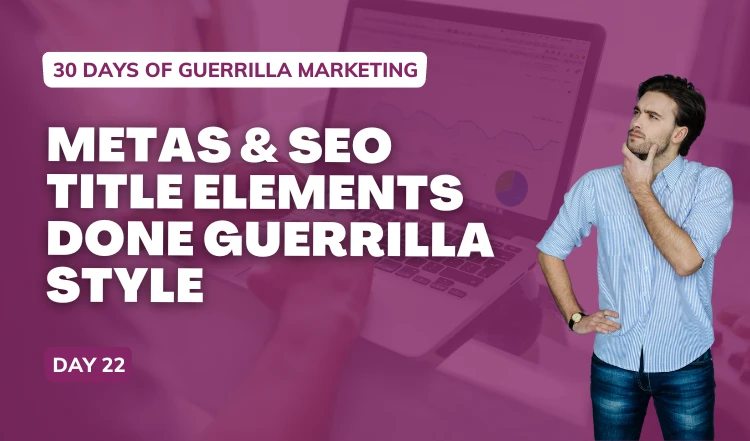This is the second article in our series on Content SEO. Click here to check out the first article that covers keyword research before moving on to the all important site structure of your content.
What Is Site Structure?
Site structure is important for ranking, so it’s important that you do your best to create a structure that is pleasing to the search engines, as well as your customers.
Site structure refers to how you organize the pages on your website. It’s how the pages are grouped, linked, and presented to the person visiting your site. If you have a solid structure, your website and your rankings will benefit.
It’s like putting your important papers into files. It helps you stay organized and find what you’re looking for. Not only does this benefit your visitors, it also benefits the search engines, and you will be rewarded with better rankings.
Why Is Site Structure Important?
Good site structure allows search engines to find your most important content. It lets the search engine know what your site is about and how the different pages are related to each other. This is how good structure leads to better rankings.
Site structure is important for ranking. It’s important for three main reasons:
- Good site structure helps search engines understand your site.
Your site structure gives search engines a map to find your most important content. It also determines if the search engine can understand what your site is about. This is how good structure on your site leads to better rankings.
- It helps you avoid competing with your own content.
Depending on your business and market, you may have multiple pages about similar topics. Without a solid, organized structure, you may find yourself in a rankings war with… your own website. You may have multiple pages targeting the same keywords. This is called “keyword cannibalization”.
Site structure allows you to clarify for search engines which content is the most important. If you don’t tell the search engines which posts are most important, some of your pages may end up competing against each other.
- It creates a better user experience.
Your users will also benefit from a well-structured website. The way your site is structured should provide users with natural paths between pages.
A well-defined structure allows your audience to navigate your site with ease. A pleasant user experience increases conversions, subscriptions, and loyalty.
And, when users spend more time on your site, the search engines assume that they are enjoying your content, which will help your rankings.

The Ideal Structure
Ideally, your site structure should look like a pyramid. At the top is your homepage. On the homepage, there are links to other pages one level down, like category pages. Those pages link to pages even further within your site, and so on.
Effective content SEO strategy means marrying your keyword strategy with the structure of your site, so they work together.
You need to consider which competitive keywords you’re trying to rank for, as well as which long-tail ones. Pages targeting competitive keywords should be higher in the pyramid than those targeting less competitive long-tail keywords.
Be sure the long-tail keyword pages link correctly to the pages that are higher in your pyramid structure.
Improving Your Site Structure
If you didn’t set up your website in a perfect pyramid from the beginning, don’t worry. There are still a lot of things you can do to improve your structure and SEO content.
- Cornerstone content: Focus on creating cornerstone articles. These are the articles that are very in-depth and cover topics thoroughly from every angle. Google favors high-value, deep content over shallow content. Once you determine what your cornerstone articles are, be sure to update them regularly.
- Tail-to-head linking: Once you’ve decided on your cornerstone articles, link your articles that target long-tail keywords to those cornerstone articles. This will help the search engines know the different articles are related to each other.
- Don’t use too many tags, but use enough: Tags and taxonomies give your site a better structure, at least in the eyes of the search engines. They help you group articles around similar topics. Just be careful not to overdo it. Too many tags lead to confusing and poorly structured content.
- Avoid duplicate content: Remember, the search engines have to choose what to show in the search engine results, and if you have duplicate content it might hurt your chance at ranking.
- Remove old content: Regular content maintenance for SEO includes updating, merging, or deleting your older content. If the content is outdated, get rid of it. If it has valuable backlinks to it, make sure you redirect the URL.
- Take care of orphaned content: Orphaned content is a page that doesn’t have links to it from your other pages. This makes them hard to find by search engines and users. Search engines view orphaned content as less important.
So, if an article is important to your SEO strategy, make sure search engines and visitors know how to find it by linking to it from other related content.
- Keyword cannibalization: Once you start creating content, you may have more than a few articles about any number of topics. If these articles are basically giving the same information, users and search engines may get confused, and you may end up competing against yourself. Make sure each one of your pages targets one primary keyword. You don’t want multiple pages competing for the same keywords.
- Evaluate categories: Try to ensure that your categories have roughly the same amount of content in each one. If your categories become too large, it becomes harder for visitors to find what they are looking for. It also doesn’t give the reader a variety of content types to explore. When one category is significantly bigger, your site becomes unbalanced, and you’ll have a harder time ranking with so much similar content.
- Improve internal linking: Internally linking to the best and most important content on your site shows search engines what your best articles are. Good internal linking is important for search engine rankings.
Maintaining your site structure is an ongoing process. As your site grows, your site structure will need to be maintained. This should be an important facet of your ongoing SEO strategy. It’s an actionable part of SEO that you can improve quickly for big results.
Next up, we’re going to dig into copywriting for search engine optimization! How exciting!





